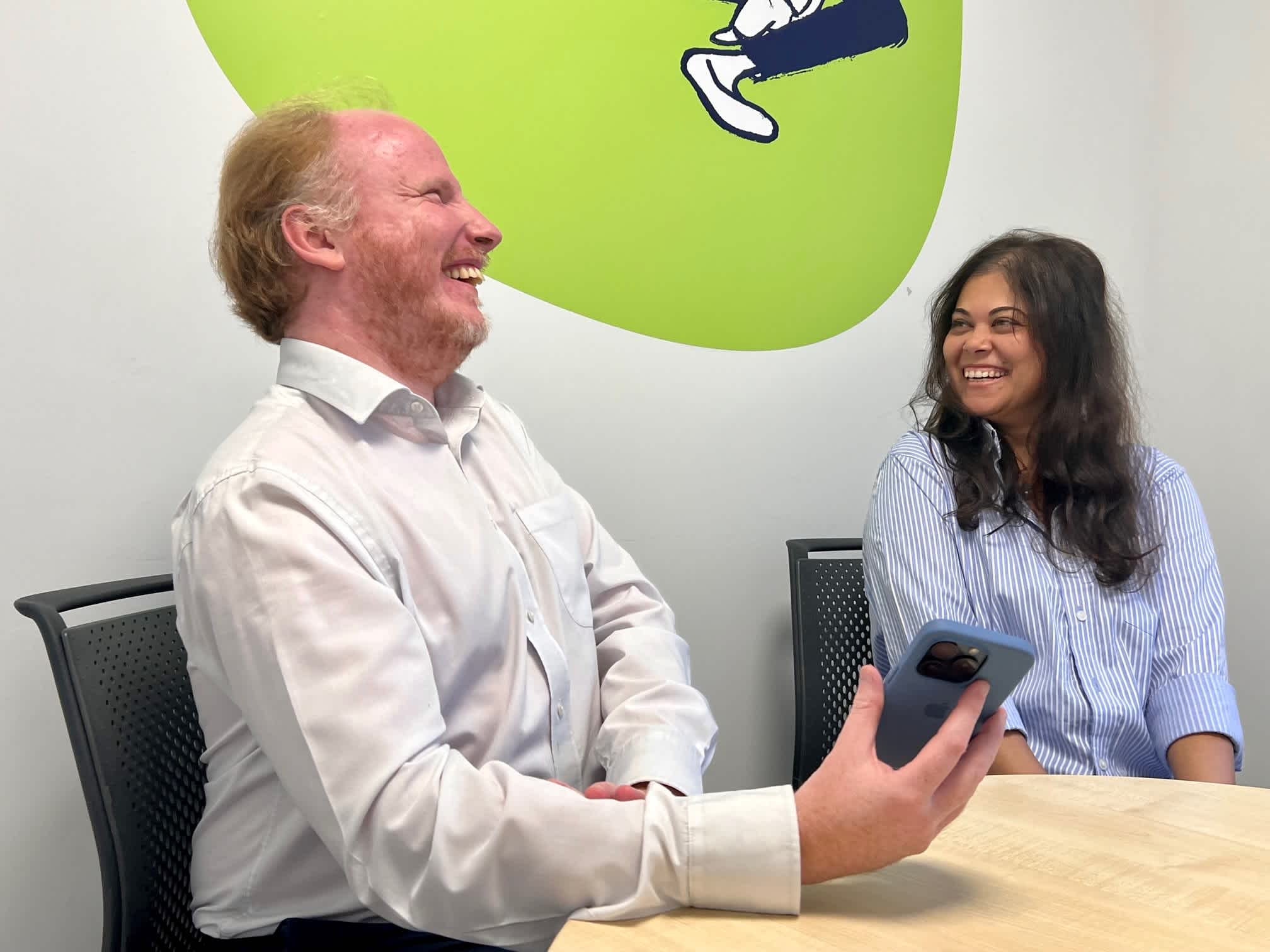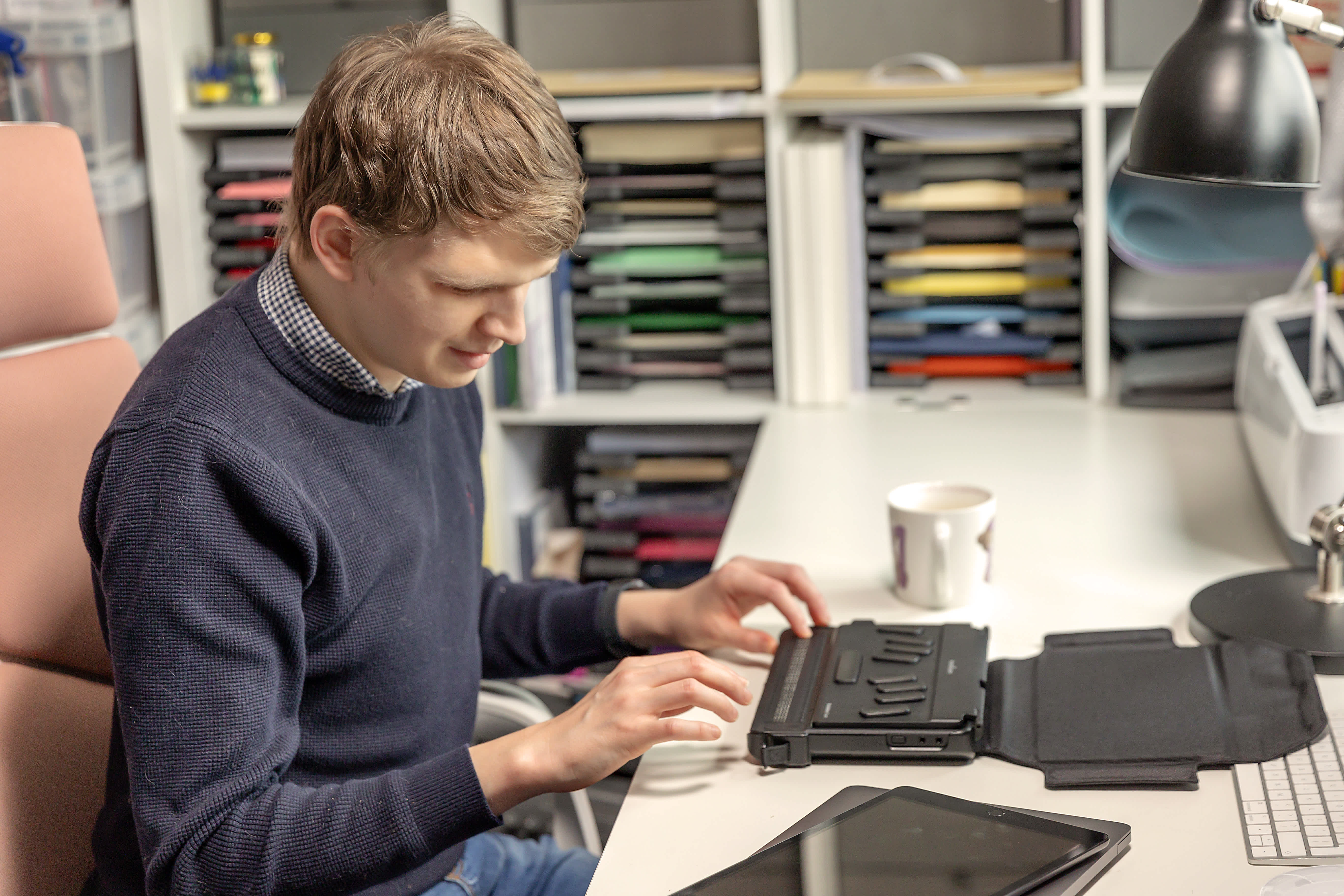Google's commitment to accessibility shines brightly in its latest Android version rollout for Google Pixel. These updates bring a plethora of improvements tailored to make the Pixel experience more inclusive and accessible for people with vision impairments. In this article, we will dive into the array of features and enhancements that the Android 14 release brings to the new Pixel 8 and previous models of the Pixel phone. We’ll also look at the new accessibility features available with the Pixel Watch 2.
Android 14
Guided Frame is now available on the rear camera of Pixel phones
The Guided Frame feature, now available with the rear camera, can identify more objects, making photography easier and more accessible for users with a vision impairment. Guided Frame on your camera works with Google TalkBack to help make sure the subject of your photo is in frame. Check out our Android accessibility playlist for quick video tutorials on setting up Guided Frame and other features.
Magnifier App for Pixel Phones
Google has created innovative apps like the Magnifier app to empower and enhance accessibility. This app makes small, faintly lit, or distant text easier to read for those people with a vision impairment.
Key Features:
Zoom function control with + and - buttons.
Flashlight and camera switching options.
Adjustments for contrast, brightness, and colour filters.
Automatic brightness adjustment for low-light environments.
Options to copy text, listen to it via text-to-speech, or send it to Google Lens for further assessment.
Easily save images to a specific camera folder for later use.
Supported Devices: Magnifier is currently supported on Pixel 5 phones or later.
Set up Quick Phrases so you don’t need to start every voice command with “Hey Google”
Setting up quick phrases allows users, including those who are vision impaired, to streamline their voice commands without repeatedly saying "Hey Google." This feature enhances accessibility by reducing the effort required to initiate commands, making voice interactions more efficient. For people with vision impairments, this can be especially helpful, as it simplifies the process of getting information, controlling smart devices, or performing various tasks using voice assistants, ultimately promoting a more seamless and inclusive user experience.
Customise your notifications with different sounds and vibrations for different apps
Creating variety in your notifications can enhance your mobile experience. Instead of having every ping sound the same, consider customizing alerts for different types of notifications. For instance, you can assign unique sounds or vibrations to text messages, voicemails, app updates, and more.
This not only adds a personal touch but also helps you quickly identify the nature of the notification without checking your device.
Monochromatic themes
Monochromatic themes, characterised by a single colour palette, can offer significant benefits to people with vision impairments. They enhance accessibility by simplifying the visual environment, making it easier to distinguish elements and navigate the interface. With a limited colour range, text and icons become more prominent against the background, aiding readability and reducing eye strain.
Monochromatic designs also promote consistency and predictability in the user interface, which can be particularly helpful for people who rely on screen readers and voice commands.
AI is revolutionising accessibility for people with a vision impairment
AI-Powered Google Home Summary
Leveraging AI, Google Home can now provide a summary of your daily activities, even identifying parcels that have turned up during the day by going back through your doorbell camera footage. This feature enhances convenience and access to information for users.
Lookout App
Google's Lookout app, created with the vision impairment community in mind, soon will be introducing a new feature called "Image Question and Answer." This tool harnesses AI, specifically an advanced visual language model developed by Google DeepMind, to describe images even without captions or alt text. It empowers users to inquire about the content of images using their voice or text input, enhancing their understanding of digital visuals. This innovation marks a significant step forward in making the visual world more inclusive for those with vision impairments.
Assistant with Bard AI will roll out on Pixel 8 to make day-to-day tasks easier
The AI Bard assistant could help to provide people who are vision impaired with a versatile and helpful tool. With its integration into Android devices, it may offer features such as text-to-speech capabilities, aiding users in reading books, documents, or web content. Additionally, it could facilitate navigation by providing audio-based directions and describing visual elements in the surroundings.
This assistant, combined with Bard's capabilities, can search the Internet for information and provide the best answers swiftly. This functionality is especially valuable for people with vision impairments, as it grants them quick access to relevant information without the need to spend hours searching online.
We’ll be covering the impact of Assistant with Bard AI at a later date once the technology is fully rolled out.
Pixel Watch 2 Accessibility Features
Customisable Accessibility Settings
You can customise Google Pixel Watch with accessibility settings like magnification, font size, and more. During setup, you can turn on the TalkBack text-to-speech accessibility shortcut by triple tapping the side button next to the crown.
Safety Check and Emergency Sharing
The Google Pixel Watch boasts a range of safety features designed to provide assistance in times of emergency. One of the standout capabilities is its ability to connect users directly to emergency services when needed. As long as you've unlocked your watch at least once since startup, you can initiate a call to emergency services without having to unlock it again, streamlining the process for quick access to help.
Google Pixel Watch 2 has also enhanced its safety features, introducing Safety Check. This feature is accessible whether your phone is nearby or not, ensuring that you can rely on it even when your device is out of reach. However, it's important to note that for the watch to call emergency services, it needs to be in proximity to your phone with a Wi-Fi connection and Bluetooth pairing established. This means that your watch acts as a valuable extension of your smartphone in critical situations.
For those with LTE-equipped Google Pixel Watches, an active LTE connection is essential for reaching emergency services. This added connectivity ensures that you can access help swiftly, even without your phone. Additionally, the Safety Signal feature, available on the Google Pixel Watch 2 LTE with Fitbit Premium, enhances the watch's capabilities by providing phone-free connectivity. With an active Fitbit Premium subscription, you can utilize Safety Signal for emergency assistance independently, further bolstering your safety.

These features extend their benefits to people with vision impairments, offering them a lifeline in emergencies. The ease of use and accessibility of these safety features make the Google Pixel Watch a valuable companion for anyone seeking reassurance and assistance when facing unforeseen challenges.
Siobhan

Get important health and fitness information using your voice
Harnessing the power of voice technology, the Google Assistant app has made it incredibly convenient to access essential health and fitness information. With just your voice, you can obtain valuable insights into your well-being. For instance, simply ask, "How did I sleep last night?" and Google Assistant will provide you with your daily sleep score or even your weekly average, allowing you to monitor your sleep patterns and make informed decisions to improve your sleep quality.
Taking it a step further, you can also initiate workout sessions through voice commands, making it effortless to kickstart your fitness routines. The inclusion of Google Assistant tiles offers the added advantage of creating shortcuts for your most frequently used queries, streamlining your interaction with the app and making it even more user-friendly.

For people with a vision impairment, these voice-activated health and fitness features are particularly invaluable. The ease of accessing information and initiating actions through voice commands ensures that those with vision impairments can stay on top of their health without relying on traditional visual interfaces. This inclusivity and accessibility of health technology open up a world of possibilities, enabling everyone to take proactive steps towards better health and well-being.
Siobhan

Google's inclusive approach and commitment to accessibility
Google's commitment to providing greater customisation and choice ensures that people with accessibility requirements can make the most of their Google Pixel experience. These enhancements represent a significant jump forward in improving the accessibility experience for users who are vision impaired.
Google's dedication to accessibility goes beyond just technology; it involves a collaborative approach with the disabled community. Over the years, Google has actively engaged with people with disabilities to develop features and products that truly empower them. This commitment extends to integrating accessibility and inclusion early in the design and development process across all of Google's product areas.
Google's dedication to accessibility continues to empower users of all abilities to be in control of their own lives through innovation and technology. Find out more about what we learned at our visit to Google’s Accessibility Discovery Centre.
To learn about the full range of features available on Google devices, read our guide to Android accessibility features.


